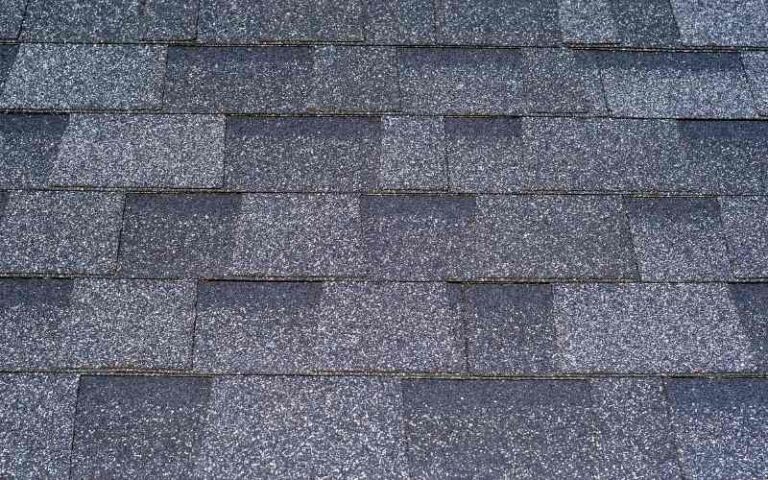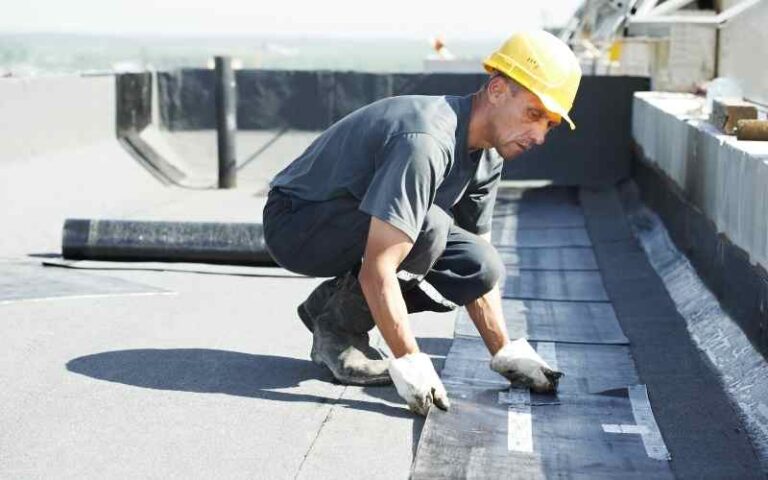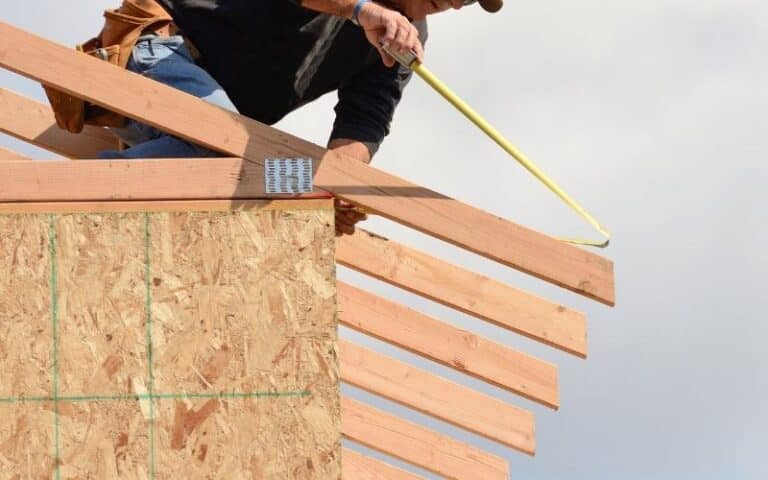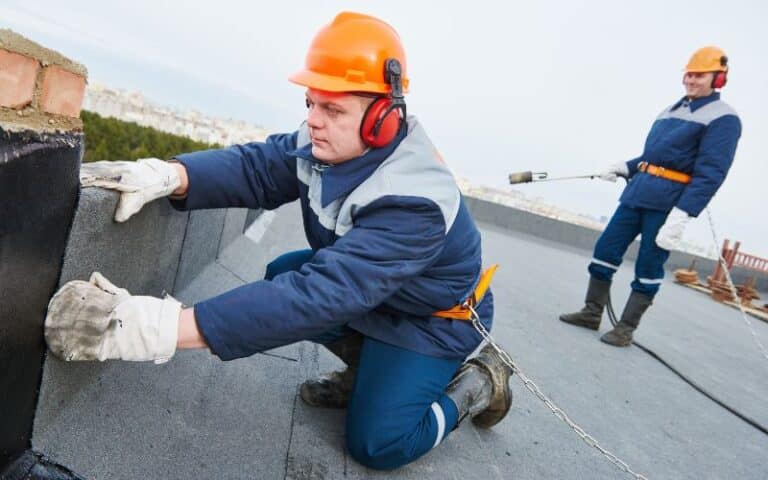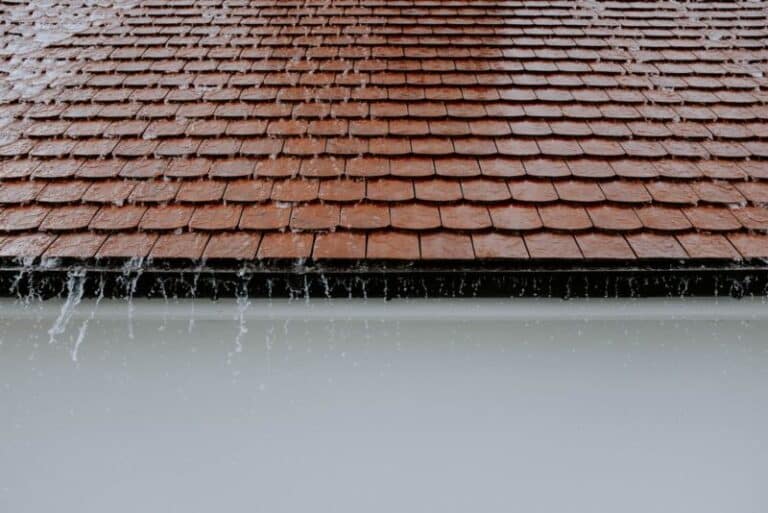A roof keeps us comfortable in our home, and having a good roofing structure adds more beauty to your home; the structure of your ceiling will define your room’s look.
Hip roofs and vaulted ceilings are similar roofing structures, but they are just a little different; having to switch between a Hip roof ceiling and a Vaulted ceiling can be possible, but the cost of having to do that depends on you.
Converting a Hip roof to a Vaulted ceiling is highly achievable, but the cost of getting it can be demanding. Reconstructing a roof to a vaulted ceiling may involve getting new roof sheets and, most likely, a ceiling raise. All this costs a lot but is achievable with the help of a good carpenter.
Ready for a Roofing Quiz?
Can You Convert Hip Roof to Vaulted Ceiling?

Converting a hip roof into a vaulted ceiling is very cool, but it depends on what you need.
Still, it all depends if you’re ready to spend because having a vaulted ceiling through reconstruction would cost a lot.
This cost is because vaulted ceilings are bigger and give your attic lots of space.
Your home’s ability to maintain its structural integrity depends on the truss structure in every way possible.
When one component of a house’s framework ejects, another component’s function must step in to take its place.
It is necessary to remove sections of the wooden beams to create a vaulted ceiling. Because of this, the parts taken away need reshaping in some other way.
When Reconstructing your hip roof into a vaulted ceiling, you’ve to remove the whole roof sheet, leaving only the plywood.
Now the rafters are there to give additional support across their sides through two-by-ten planks affixed to the rafters.
The rafters are the only components of the beam that should be left standing after this step.
This method is known as “sistering. These two-by-tens create extra space between the ceiling and the roof, enabling insulation and lighting in the area.
How Much Does It Cost to Convert to Vaulted Ceilings?
The price of vaulting a ceiling might vary greatly depending on the project’s location and the nature of the work.
It is possible to install vaulted ceilings during the renovation process, but it is far better to do it during the initial construction phase.
When contemplating the implementation of a project, it is essential to consider the complete set of relevant factors.
When adding a vaulted ceiling in new construction, expect the cost to be five to twenty percent higher than a regular ceiling.
The reason is that the materials and the labor cost will be higher. Further cost increases will likely result from adding very high cathedral ceilings and ceilings that feature a great deal of intricate design.
During a remodel, the cost of elevating a ceiling can range anywhere from $50 to $75 per square foot, although the average price is around $60 per square foot (0.09 meters) (0.09m).
These calculated estimates assume there will be no significant alterations to the roof or other structural elements.
Pros and Cons of Having a Vaulted Ceiling:
| Pros | Cons |
|---|---|
| It gives a basic room an elegant look. | A vaulted ceiling raises energy costs—more area to heat and cool. |
| A vaulted ceiling can transform empty roof space into functional room space. | While the area is bigger, vaulting the roof doesn’t add more space for equipment and circulation. |
| It can make a small room feel larger and more refreshing. | The vaulted ceiling is likewise unreachable. |
| A vaulted ceiling works with modern, farmhouse, and mid-century architecture. | Vaulting a ceiling may waste attic space. |
How to Convert Hip Roof to Vaulted Ceiling?
To begin, make your way up to the attic; trusses are what you have if you look up at your roof and see the framework installed.
The complete roof structure will move out to add vaulted ceilings. If, on the other hand, it has a classic wood frame with large rafters made of lumber, the roof will still be there.
Second, take some measurements to determine the depth of the rafters. Unless you utilize spray-in foam, an insulation depth of less than five and a half inches is insufficient to insulate a space adequately.
When using batt insulation, you must leave an air gap of one inch to ventilate beneath the roof properly.
Third, check ducts, plumbing vents, HVAC systems, and wiring for problems. After this, you consult a building inspector to ensure the collar ties are in the right position.
It assists your walls from separating after ceiling joists are out. Hire an Expert in the field to determine if your heating system can handle vaulted ceilings.
Carpentry isn’t difficult. After collar ties are placed horizontally between opposing rafters, 1x3s are hammered to the ties to provide a robust ceiling backing.
How Much Value Does a Vaulted Ceiling Add?
Vaulted ceilings add more value to your home, especially its structure. They are bigger and give your room and attic enough, encouraging ventilation.
Their value can differ due to individual differences, but it’s certain to know that having a vaulted ceiling is worth it.
They typically have upper parts or skylights, implying increased natural light.
There is a possibility that vaulted ceilings will increase energy expenses in certain situations; nevertheless, the potential benefits typically outweigh the potential drawbacks.
A vaulted ceiling adds value to your home. Still, the amount of value it adds depends on some factors. They include:
- The size of the room as a whole.
- The quantity of natural light that comes into the room.
- The presence of high ceilings or other architectural elements in the ceiling.
The additional value added to a property by having a vaulted ceiling depends on the type of housing and the marketplace in which it is.
In addition to this, the quality of the property and its overall size are important considerations.
The home’s square footage as a whole, the quality of the fittings and finishes, and the existence or absence of appropriate storage space will all have a greater impact on the home’s value than the height of the ceilings.
If the house is poorly planned out or has other serious weaknesses, ceiling beams will not compensate for the lost value.
Is It Worth It to Vault a Ceiling?
It is far more challenging to convert a vaulted ceiling than to include one in a newly built home.
However, you should be aware that even though incorporating vaulted ceilings into newly built homes may be simpler, doing so does increase the cost of building.
Vaulted ceilings provide a home with many benefits, such as space in the attic, good architecture, and many more.
Many are going into getting their ceiling vaulted because of its added advantages.
While you have a change of heart about a vaulted ceiling or you want a reconstruction, it’s important to know that the cost of having a vaulted ceiling is quite demanding, but if you have all it takes to get it, do it at all cost because it adds value to your building.
Conclusion
Ceilings are different types and shapes, but the hip roof and Vaulted ceiling are common.
The difference between a vaulted ceiling and others is the cost, size, and architectural designs, so if you feel you’ve to change, it’s great.
Vaulted ceilings give your ceiling well-ventilated attic space, so having them in your home would be advisable.

